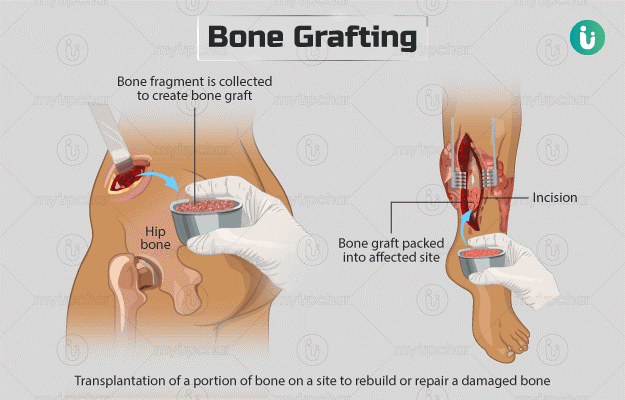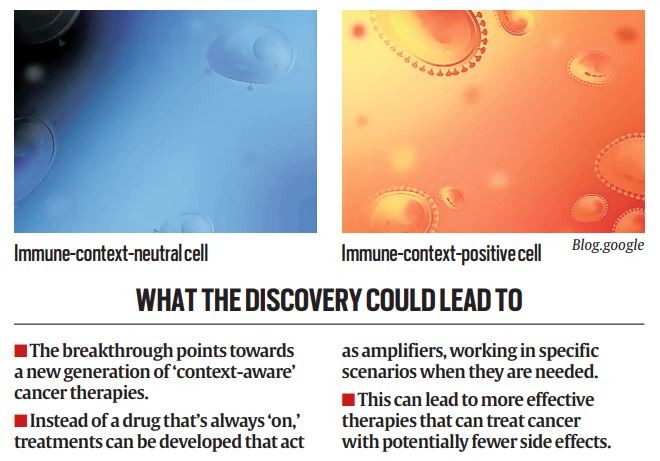Description

Disclaimer: Copyright infringement not intended.
Context
The development of a novel bone grafting material by the team at the Indian Institute of Technology, Kanpur (IIT-K) holds great promise for improving patient outcomes in orthopedic and bone surgery.
Details
- Technology Overview: The newly developed technology by IIT-K promotes bone healing, regeneration, and targeted drug delivery at the site of bone infection or surgery.
- Material Composition: The bone grafting material is based on nano-hydroxyapatite, which closely mimics the natural biological composition of bone. This material offers advantages over methacrylate-based bone substitutes commonly used in orthopedic surgery.
- Applications: The nano-hydroxyapatite-based grafting material has a wide range of applications, including bone cancer treatment where bone regeneration is necessary after tumor removal, bone infections, osteoporosis, joint and bone diseases, as well as knee and hip orthoplasty.
- Drug Delivery: The material can also serve as a carrier for drugs, allowing for direct delivery to the site of infection or surgery. This capability can be particularly beneficial for conditions like spine TB, where targeted drug delivery can enhance infection control.
- Cost-Effectiveness: The indigenously developed bone substitute is projected to be available at a relatively low cost of ₹1,500 to ₹2,000 when it reaches the market, making it more accessible to patients.
- Commercialization: IIT-K has signed a Memorandum of Understanding (MoU) with Conlis Global Inc., a Canadian biotechnology firm specializing in bringing research and development products to market. This partnership indicates a step towards commercializing the technology and making it available to patients worldwide.
About Bone Grafting
- Bone grafting is a surgical procedure commonly used to replace missing bone or repair bone fractures that are difficult to heal.
- It involves transplanting bone tissue from one area of the body to another, or using artificial or synthetic materials to stimulate bone growth and regeneration.
- Bone grafting is widely employed in various medical fields including orthopedics, dentistry, and maxillofacial surgery.
Types of Bone Grafts:
- Autografts: Bone tissue harvested from the patient's own body, often from the hip (iliac crest), ribs, or other bones.
- Allografts: Bone tissue obtained from a donor, typically cadaveric bone. These grafts are processed to remove cells and reduce the risk of rejection.
- Xenografts: Bone tissue sourced from animals, usually bovine or porcine, and processed to make it biocompatible.
- Alloplastic grafts: Synthetic materials such as ceramics, polymers, or biocompatible metals used to mimic bone structure and promote bone regeneration.
Indications for Bone Grafting:
- Fracture Healing: To promote healing of complex fractures, non-unions, or bone defects.
- Bone Defects: To fill voids created by trauma, tumors, infection, or congenital deformities.
- Spinal Fusion: In orthopedic and neurosurgical procedures to stabilize the spine, treat degenerative disc disease, or correct deformities.
- Dental Implant Surgery: To augment bone volume in the jaw for successful placement of dental implants.
- Maxillofacial Reconstruction: To restore bone structure and function in facial trauma, congenital defects, or after tumor removal.

Bone Grafting Techniques:
- Bone Graft Harvesting: Techniques for obtaining autografts, including traditional open surgery or minimally invasive procedures.
- Bone Graft Preparation: Processing allografts or xenografts to remove cellular components while preserving the scaffold and growth factors.
- Graft Placement: Surgical insertion of the graft material into the defect site, often secured with fixation devices like screws, plates, or meshes.
- Bone Graft Substitutes: Utilization of synthetic materials or biological agents to stimulate bone formation and regeneration.
Complications and Risks:
- Infection: Risk of infection at the graft site, particularly with allografts or xenografts.
- Graft Failure: Insufficient blood supply, immune rejection, or mechanical instability leading to graft non-union or resorption.
- Pain and Discomfort: Postoperative pain, swelling, and discomfort at the donor and recipient sites.
- Nerve or Vascular Injury: Damage to surrounding nerves or blood vessels during graft harvest or placement.
Recent Advances:
- Biological Enhancements: Growth factors, stem cells, and tissue engineering techniques to enhance graft integration and accelerate healing.
- 3D Printing: Customized scaffolds and implants fabricated using additive manufacturing technologies to match patient anatomy and optimize graft performance.
- Gene Therapy: Genetic modification of graft materials to improve osteogenic potential and long-term outcomes.
- Nanotechnology: Utilization of nanomaterials for targeted drug delivery, surface modification, and enhanced bioactivity in bone graft substitutes.
About Hydroxyapatite
- It is a naturally occurring mineral form of calcium apatite, with the chemical formula Ca5(PO4)3(OH). It is the main inorganic component of bone and teeth, contributing to their strength and hardness.
- Hydroxyapatite also has various biomedical applications due to its biocompatibility and similarity to the mineral phase of bone tissue.
Structure and Composition:
- Chemical Formula: Ca5(PO4)3(OH)
- Crystal Structure: Hydroxyapatite belongs to the hexagonal crystal system. Its crystal lattice consists of calcium (Ca2+) and phosphate (PO4^3-) ions, with hydroxide (OH^-) ions occupying some of the phosphate sites.
- Composition: Hydroxyapatite is primarily composed of calcium and phosphate ions, with the calcium-to-phosphorus ratio close to 1.67, which is similar to the ratio found in biological apatites.
Properties:
- Biocompatibility: Hydroxyapatite is biocompatible, meaning it is well-tolerated by living tissues without causing adverse reactions.
- Bioactivity: It exhibits bioactive properties, promoting interactions with biological tissues and facilitating bone integration and regeneration.
- Hardness: Hydroxyapatite is a hard mineral, contributing to the strength and rigidity of bone and teeth.
- Insolubility: It is relatively insoluble in physiological conditions, providing long-term stability when used in biomedical applications.
- Porosity: Hydroxyapatite can be synthesized with varying levels of porosity, which can influence its mechanical properties and suitability for different applications.
Synthesis Methods:
- Biomineralization: Mimicking natural processes, hydroxyapatite can be synthesized under controlled conditions using biomimetic methods, where calcium and phosphate ions are combined in a solution that mimics the body's physiological environment.
- Chemical Precipitation: Mixing calcium and phosphate-containing precursors in aqueous solutions under specific pH and temperature conditions can induce the precipitation of hydroxyapatite crystals.
- Hydrothermal Synthesis: Subjecting precursor materials to high temperature and pressure in an aqueous solution can promote the formation of hydroxyapatite crystals.
- Sol-Gel Processing: This method involves the hydrolysis and condensation of precursor compounds to form a sol, which is then transformed into a gel and subsequently calcined to produce hydroxyapatite ceramics.
Biomedical Applications:
- Bone Grafts: Hydroxyapatite-based materials are widely used as bone graft substitutes for filling bone defects, promoting bone regeneration, and enhancing osseointegration in orthopedic and maxillofacial surgeries.
- Dental Implants: Hydroxyapatite coatings or scaffolds are utilized in dental implants to improve implant-bone interface bonding and long-term stability.
- Drug Delivery Systems: Nanostructured hydroxyapatite particles can serve as carriers for drug delivery, allowing controlled release of therapeutic agents for various medical applications.
- Tissue Engineering: Hydroxyapatite scaffolds provide a three-dimensional structure for cell attachment, proliferation, and differentiation, facilitating the engineering of bone and cartilage tissues for regenerative medicine.
About Human Bones
- Human bones form the structural framework of the body, providing support, protection, and anchorage for muscles and organs.
- They are dynamic structures composed of living tissues that undergo continuous remodeling throughout life.
Anatomy of Bones:
- Composition: Bones are composed of both organic and inorganic components. The organic matrix consists mainly of collagen fibers, while the inorganic matrix is primarily composed of calcium phosphate crystals, which provide strength and rigidity.
- Types of Bone Tissue:
- Compact Bone: Dense and solid, forming the outer layer of bones, providing strength and protection.
- Spongy (Cancellous) Bone: Less dense with a trabecular, lattice-like structure, found at the ends of long bones and in the interior of flat bones. It provides structural support and facilitates nutrient exchange.
- Bone Cells:
- Osteoblasts: Cells responsible for bone formation by secreting organic matrix components.
- Osteocytes: Mature bone cells embedded in the bone matrix, involved in maintaining bone tissue and detecting mechanical stress.
- Osteoclasts: Multinucleated cells responsible for bone resorption, breaking down bone tissue and releasing minerals into the bloodstream.
Classification of Bones:
- Long Bones: Longer than they are wide, with a shaft (diaphysis) and two expanded ends (epiphyses). Examples include the femur, humerus, and phalanges.
- Short Bones: Roughly cube-shaped with spongy bone enclosed by a thin layer of compact bone. Examples include the carpals and tarsals.
- Flat Bones: Thin, flattened bones with two layers of compact bone enclosing a layer of spongy bone. Examples include the skull bones, ribs, and scapulae.
- Irregular Bones: Complexly shaped bones that do not fit into the other categories. Examples include the vertebrae, pelvic bones, and facial bones.
Functions of Bones:
- Support: Bones provide structural support for the body, maintaining posture and preventing collapse.
- Protection: Bones encase vital organs, such as the brain (protected by the skull) and the heart and lungs (protected by the ribcage).
- Movement: Bones, in conjunction with muscles and joints, facilitate movement and locomotion.
- Mineral Storage: Bones serve as a reservoir for minerals such as calcium and phosphorus, which are essential for various physiological processes.
- Hematopoiesis: Certain bones contain red bone marrow, where hematopoietic stem cells produce blood cells, including red blood cells, white blood cells, and platelets.

Bone Development and Growth:
- Ossification: Bone formation occurs through two main processes: intramembranous ossification (formation of flat bones) and endochondral ossification (formation of long bones).
- Growth: Long bones grow in length at the epiphyseal plates (growth plates) located at the ends of the bone shaft. Cartilage cells proliferate and are replaced by bone tissue, lengthening the bone until growth plate closure in adulthood.
Common Bone Disorders and Conditions:
- Fractures: Breaks in bone tissue resulting from trauma or stress, classified based on the severity and location of the fracture.
- Osteoporosis: A condition characterized by weakened bones due to loss of bone density and deterioration of bone tissue, leading to increased risk of fractures.
- Osteoarthritis: Degenerative joint disease resulting from the breakdown of cartilage at joint surfaces, leading to pain, stiffness, and reduced mobility.
- Bone Infections: Infections of bone tissue, such as osteomyelitis, caused by bacteria, fungi, or other pathogens, often requiring antibiotic therapy and surgical intervention.
Conclusion
Overall, this innovation represents a significant advancement in the field of bone grafting and orthopedic surgery, offering a promising solution for enhancing bone healing and regeneration while also providing a means for targeted drug delivery to improve treatment outcomes.
|
PRACTICE QUESTION
Q. Human bones are structures essential for the functioning and integrity of the body. Discuss. (250 words)
|








